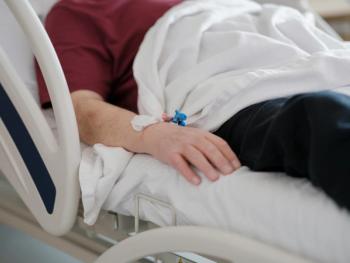
ASM Microbe 2017 Opening Plenary: Insights from Zebrafish Models of TB, Leprosy & Origins of Life
In New Orleans, The American Society of Microbiology 2017 annual meeting started with 3 distinct speakers.
The first presentation by Julie Theriot, PhD, a professor in the Department of Biochemistry and the Department of Microbiology & Immunology at the Stanford University School of Medicine focused on, “The Application of Simple Physics Models to Understanding Bacterial Cells.” Dr. Theriot highlighted that physics aims to explain complex biological phenomena with simple models. Particularly, we do not need a biological mechanism when a physical model is sufficient. She illustrated this with her studies examining how physical stresses on the bacterial cell wall affect cell wall synthesis but not bacterial reproduction. By performing high resolution temporal microscopy, her research group was able to capture the sudden cracking of Bacillus subtilis and Staphylococcus aureus into daughter cells. While osmolarity affected bacterial size and membrane structure, osmotic changes did not influence the rate of growth. Instead, pressure helped stretch out the newly formed cell wall.
Next, Lalita Ramakrishnan, PhD, professor in the Department of Medicine at the University of Cambridge, presented zebrafish animal models of the granulomatous diseases tuberculosis and leprosy. Both tuberculosis and leprosy involve bacterial infection of macrophages. However, peripheral neurodegeneration is only observed with leprosy. She pointed out that the first US leprosarium was very close to New Orleans, right here in Carville, Louisiana from 1894-1999 and then it was moved to Baton Rouge, Louisiana; it is the only US institution exclusively devoted to leprosy consulting, research, and training. Her laboratory had previously developed models of tuberculosis using Mycobacterium marinum. Working with the Baton Rouge leprosarium, they were able to obtain some of the slow growing (12 days replication rate) Mycobacterium leprae and Dr. Ramakrishnan’s group could detect demyelination within just a few days post-M. leprae infection. No demyelination was detected in fish infected with M. marinum.
Most significantly, by using the optically transparent zebrafish embryo cells in vivo her group was able to determine that M. leprae-infected macrophages cause Schwann cell demyelination with neurodegeneration by a mechanism that does not involve Schwann cell infection. By 3-D in vivo cellular visualization of bacteria, Schwann cells, and macrophages in zebrafish, Dr. Ramakrishan’s group determined that the bacteria do not actually infect the Schwann cells. Rather the M. leprae bacteria are only present within the macrophages that move and abut Schwann cells.
Most elegantly, when the M. leprae gene PGL1 was put into the M. marinum bacteria, this pathogen could then cause demyelination. Meanwhile, macrophage depletion prevented M. leprae-mediated demyelination. Thus, the demyelination really begins with macrophage infection and is not mediated by Schwann cell infection. Finally, Schwann cell demyelination was caused by excessive nitric oxide production causing Schwann cell mitochondria damage. In the end, Dr. Ramakrishnan highlighted that this macrophage-mediated indirect neural pathogenesis may be significant to the most common form of clinical demyelination, multiple sclerosis.
In the final presentation, Dr. Nick Lane, an evolutionary biochemist and writer in the Department of Genetics, Evolution and Environment, University College London (UCL) and leader of the UCL Research Frontiers Origins of Life program. presented, “A Bioenergetic Basis for the Origins of Life.” He pointed out that he was inititally surprised and unsupportive of the evolutionary model proposed by Dr. Bill Martin, describing the last universal common ancestor (LUCA) as evolving into bacteria and archaea, which later merged through endosymbiosis to become the eukaryotic cell. However, Dr. Lane has since come to believe that Dr. Martin was right.
Dr. Lane described how natural proton gradients occurring in rare alkaline hydrothermal vent environments can act like electrothermal flow reactors across biological membranes and used to drive carbon metabolism. Most importantly he emphasized that natural proton gradients can power membrane bioenergetics and growth only if the membrane is leaky. Most significantly, efficiency is increased by 60% if a sodium-proton anti-porter (SPAP) is used to control this process. The use of a SPAP enables cells to colonize wider ranges of the vents. The current model for the origin of life is that LUCA relied on natural environmental proton gradients, where the subsequent divergence to archaea or bacteria occurred as a result of the sodium-proton anti-porter facilitating this divergence.
Rigorous analysis of bioenergetic cost reveals that pruning of the mitochondrial genome leads to great increases in available energy for cells according where the majority of a cell’s energy is devoted to protein synthesis. Dr. Lane’s analysis of the energy per cell of prokaryotes compared to eukaryotes reveals that eukaryotes have on average 200,000 times more energy than a bacterial cell. Accordingly, eukaryotes support many more genes than do bacteria. Dr. Lane pointed out that there are giant bacteria such as Epulopiscium fishelsoni, which has as many as 60,000 copies of its genome in a single cell. However, these genomes have not been pruned like mitochondria and so replication of all of these genomes is a huge bioenergetic cost burden. Ultimately, Dr. Lane made the point that membrane bioenergetics structures cell division.
All three presentations were well received by an audience of several thousand.
W. Todd Penberthy, PhD is a medical writer based in Orlando, Florida with over 4 years of experience. Prior to that Todd was a professor for 10 years directing biomedical research that included using zebrafish models of human disease with expertise in orthomolecular niacin-related science. He can be reached at WTPENBER@MAC.COM.
Newsletter
Stay ahead of emerging infectious disease threats with expert insights and breaking research. Subscribe now to get updates delivered straight to your inbox.



